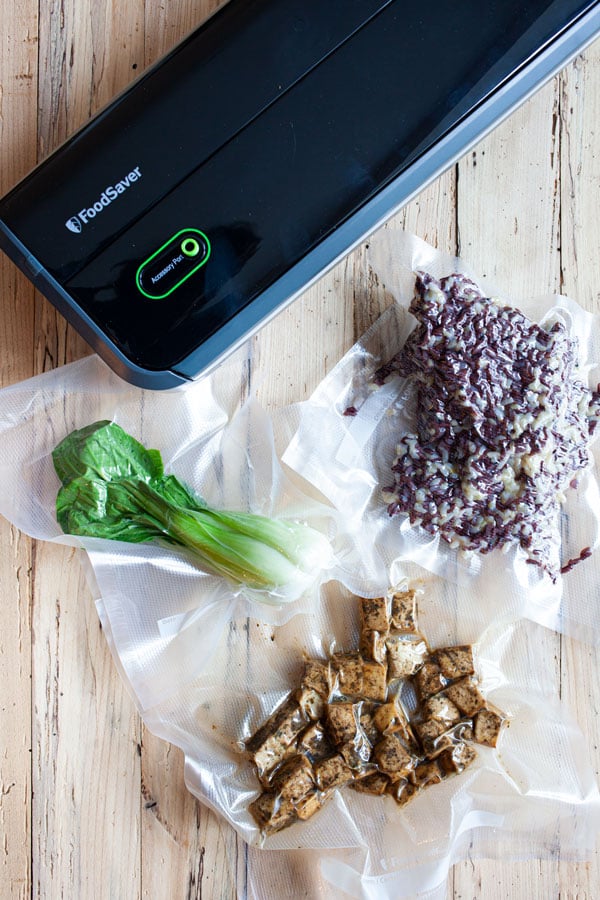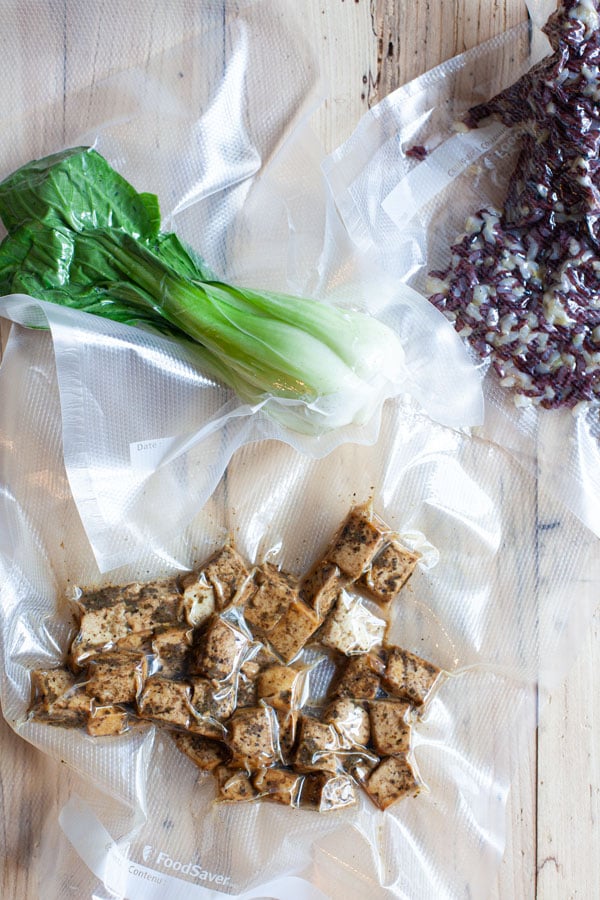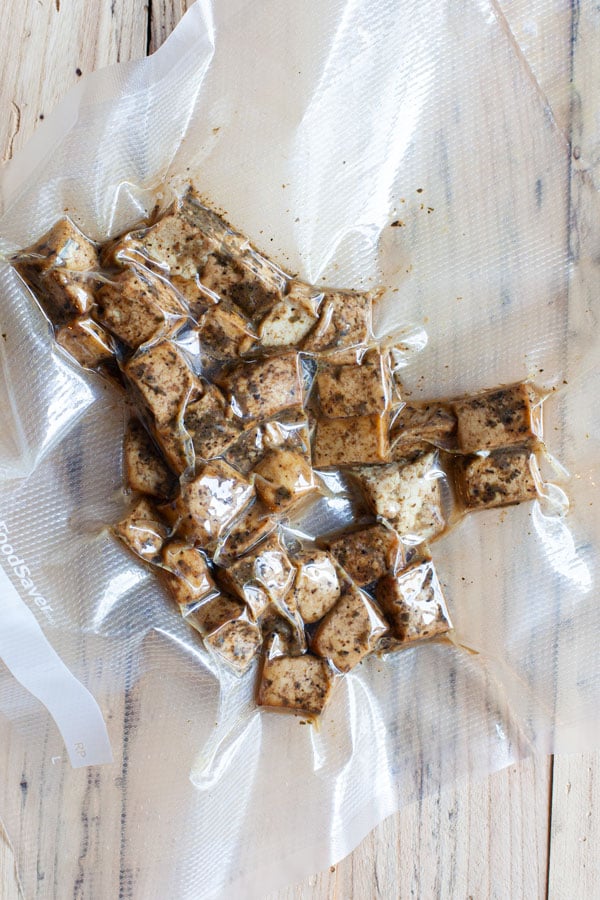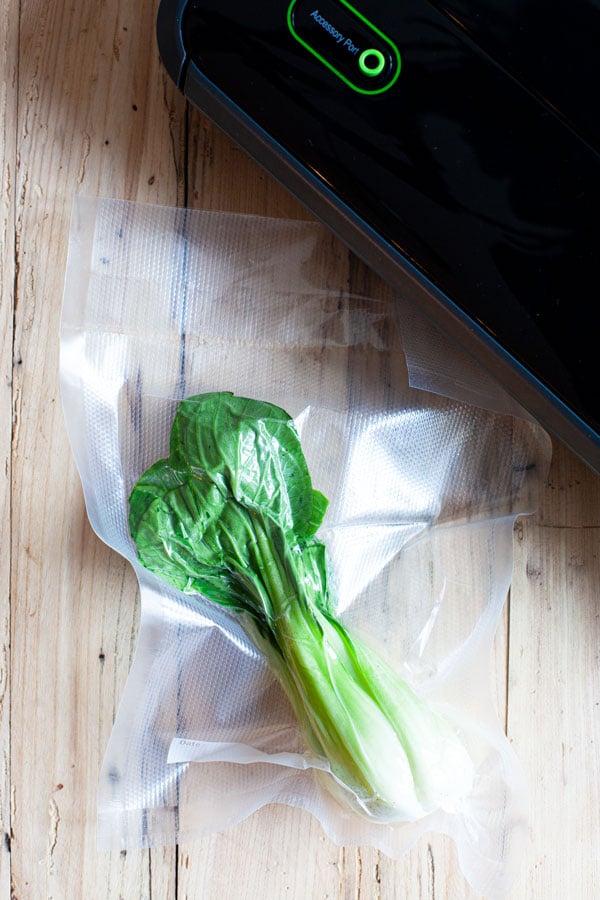
This isn’t a recipe post, but it touches on something that has been near and dear to my heart this year, as a dietetic intern: leftover storage.
During my clinical rotations, half of every Saturday and Sunday were dedicated to meal prep and batch cooking. Yes, it was a lot of time, and yes, I often wanted to be doing other things with my weekend afternoons, but in that period I got home pretty late each evening. Cooking after a long day of acute care and commuting wasn’t an option, and I still wanted to enjoy homemade meals. Batch cooking and freezing was the solution. Below you’ll see a typical week’s Sunday bounty.

Now that I’ve moved into community and food service I have more leeway, either because my schedule is more lenient (which was true in my last rotation) or because I have less cooking to do (this is true at the moment because I get complimentary lunch and breakfast at work). Still, I batch cook my weekly dinners, and the need for efficient storage is as real as ever.
When the folks at Foodsaver offered to send me one of their FoodSaver® FM2000 Vacuum Sealing System, I was intrigued but unsure: I’ve never used this kind of storage system, and I figured maybe I didn’t need another appliance in my little NYC kitchen. Now that I’ve had a chance to get to know the machine, I’m so glad to have it, and it’s getting plenty of use.

The advantage of the Foodsaver is that it reduces oxygen in stored food. Less oxygen means that food is less susceptible to bacteria and other pathogens growing. This means that food leftovers can be stored safely for longer—I’ll get to that in a second—and that the quality is stretched for more time, too.
Foodsaver’s real super strength is in freezing. Whereas food can usually be kept in the freezer for 3-6 months, food that’s been vacuum sealed with the Foodsaver can be stored for 2-3 years. When I first read this, my reaction was to think that nothing would ever want or need to hang out in my freezer for a matter of years. But then I asked myself whether or not I’ve ever pulled food out of my fridge that’s at least 6-8 months old, and the answer is…yes. Definitely yes. And wouldn’t it be great if I could eat that slice of bread, those tortillas, or those frozen chickpeas?
Freezing aside, Foodsaver extends the life of fridge and pantry leftovers, too. The life of most produce (including the baby bok choy you see above!) can be prolonged to 2 weeks, rather than the usual 3-6 days. Even berries can be extended to 1-2 weeks—much longer than their usual fridge life (I feel as though berries in particular often go bad before I’ve been able to use them). If you’re curious, you can check out this chart on the Foodsaver website to check approximate storage times for various foods, as compared to conventional storage time.

I often bake a block of tofu over the weekend for use in salads and bowls through the week, but it’s not uncommon for me to have a half or a quarter of the batch that sits in my fridge for too long. Cubes can be vacuum sealed beautifully with the food saver, as can my cooked grains and beans; you can see that I vacuum sealed some black and short grain brown rice together (rice is another grain I tend to make a lot of and sometimes waste).
The appliance is super easy to use—it would have to be, for me to figure it out as quickly as I did! You simply insert the open end of a bag into the device and turn it on. The machine removes air on its own and creates an airtight seal. To re-open the leftovers, you can simply cut the bag open.
My machine came with a roll that could be shaped into bags and pre-shaped bags. So far I’ve been relying on the bags and would probably opt to keep doing that, but the roll is good for larger items. It comes with a five-year warranty, is ETL safety certified, and I wasn’t at all surprised to learn that Foodsaver is the leading vacuum sealer brand in the country.

When you live alone and cook a lot, it’s easy to misjudge and waste food. I do this as seldom as I can, but it happens, and this machine is allowing it to happen less often. As I said, I know this isn’t a recipe post, but storing food is as much a part of being a home cook as everything else. I’ve had a great time using the FM2000, and if you do a lot of freezing and storing of your own, I suspect you might have a similar experience.
On that note, it’s time for me to wrap up my second week of food service management and to think about what I’m cooking this weekend. Happy Friday, friends!
xo
This post is sponsored by Foodsaver. All opinions are my own, and I love this means of extending the life of my food. Thanks for your support!
The post Longer Lasting Meal Prep with Foodsaver appeared first on The Full Helping.